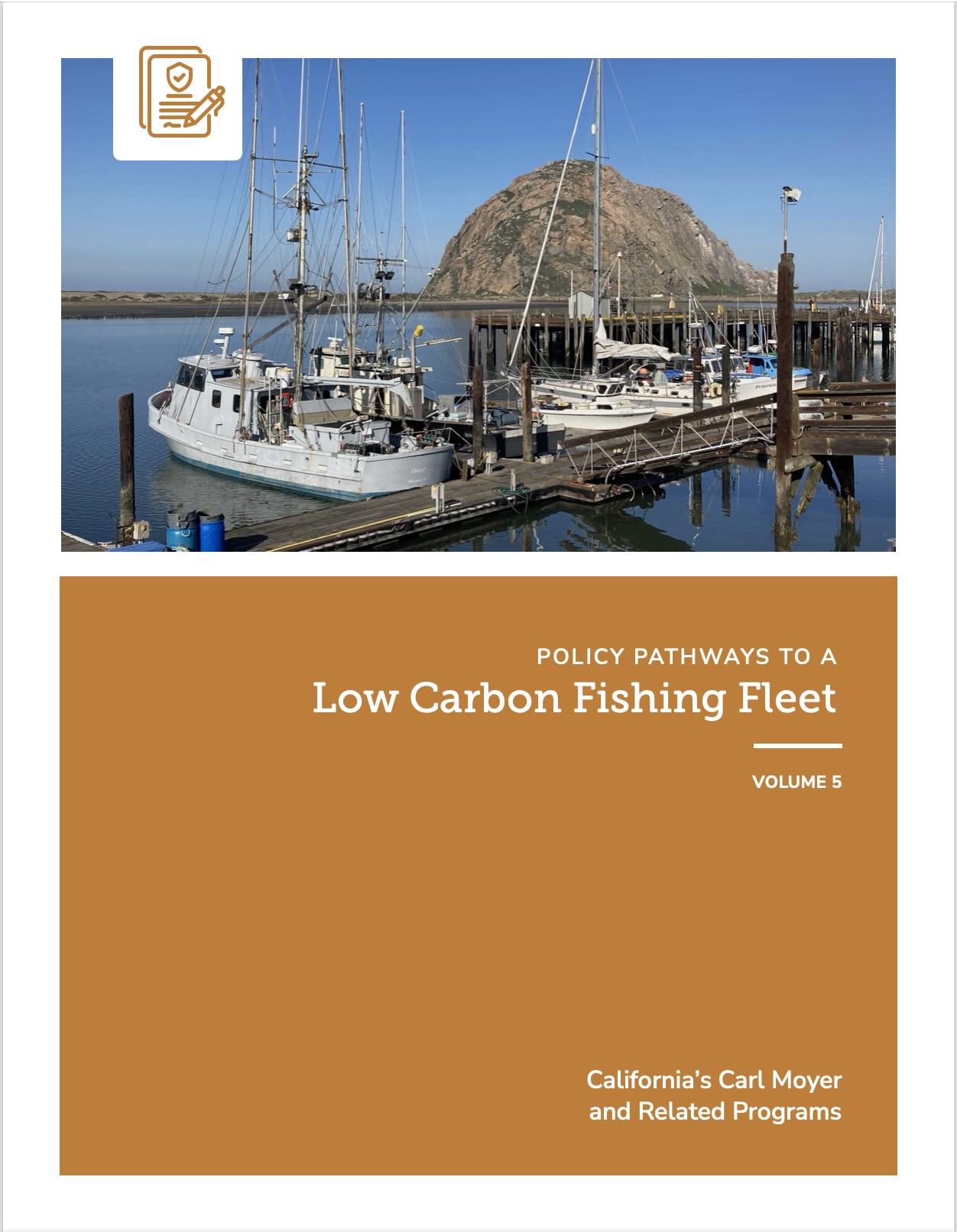Volume 5: California’s Carl Moyer and Related Programs
Abstract
This report, part of the Policy Pathways to a Low Carbon Fishing Fleet series, examines the performance of California’s Carl Moyer Memorial Air Quality Standards Attainment Program and sub-state regional funding initiatives in California in supporting emissions reduction initiatives for commercial fishing vessels. The Carl Moyer Program, designed to support projects that replace and repower engines beyond current air quality standards, is administered by California's 35 local air districts, each with its own eligibility criteria and funding priorities. Through interviews with Carl Moyer funding recipients, rejected applicants, non-applicants, an air district grants administrator, and a technical assistance intermediary, the report highlights the benefits and challenges of accessing funding from this program for California’s fishing businesses.
Key themes connected to fishermen’s success include the importance of selecting the optimal air district, the value of application assistance, the need to secure matching funds, and the role of trusted engine installers. Challenges include a demanding application process, a scarcity of affordable and qualified installers, long reimbursement waits, and narrowly defined compliance requirements. Fishermen’s recommendations for improvement emphasize comprehensive funding support, extended application windows, and the consideration of alternative compliance metrics to better accommodate the fishing industry’s unique operational realities. The report highlights the critical role of informal technical assistance intermediaries in facilitating access to funding while acknowledging the disparities faced by fishermen without such support. The report also summarizes interviews with fishermen who received funding through a time-limited regional program funded by oil pollution mitigation fees in Santa Barbara.
While programs like these were designed with the goal of mitigating the impacts of particulate matter (PM), nitrogen oxides (NOx), and other air pollutants on human health, they offer a template that can be modified or replicated as a basis for programs that reduce emissions of planet-warming greenhouse gas pollutants like carbon dioxide (CO2). This report is a starting point for fishermen and their partners in government and beyond to collaboratively design incentive programs that support a transition to a low carbon fishing fleet.

